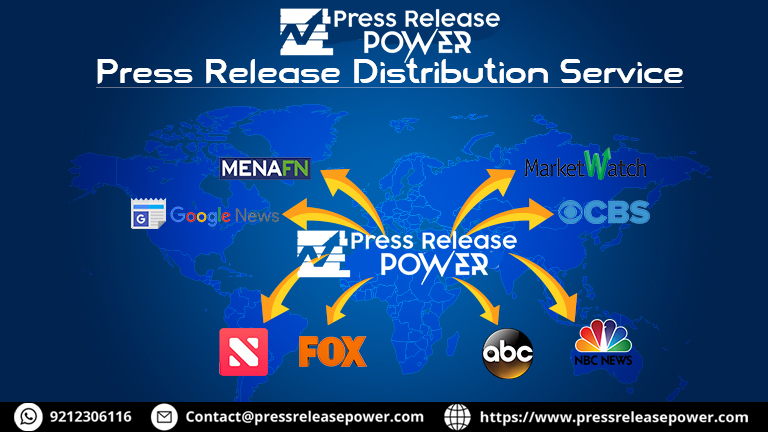In the dynamic world of digital marketing, understanding key metrics is crucial for evaluating the effectiveness of your campaigns. Two of the most commonly discussed metrics are reach and impressions. While these terms are often used interchangeably, they represent different aspects of how your content performs. In this comprehensive guide, we’ll delve into the differences between reach and impressions, explore their significance, and provide actionable insights for leveraging these metrics to optimize your marketing efforts.
What is Reach?
Reach refers to the total number of unique users who have seen your content. It measures how many individual people have been exposed to your post, ad, or campaign. This metric helps you understand the breadth of your audience and gauge how many unique viewers your content has reached.
Key Points About Reach
- Unique Users: Reach counts each user only once, regardless of how many times they see your content.
- Audience Size: It provides insight into the size of your audience and the potential exposure of your content.
- Growth Tracking: Monitoring reach over time can help you assess whether your audience is growing or if your content is reaching new users.
What are Impressions?
Impressions refer to the total number of times your content has been displayed to users. Unlike reach, impressions count every instance of your content being shown, regardless of whether the same user sees it multiple times. This metric measures the frequency of exposure rather than the number of unique viewers.
Key Points About Impressions
- Total Displays: Impressions count each instance of your content being shown, including multiple views by the same user.
- Frequency Measurement: It helps you understand how often your content is being displayed, which can be crucial for measuring the impact of repeated exposure.
- Ad Effectiveness: High impression numbers can indicate effective ad placements or content visibility.
The Difference Between Reach and Impressions
Understanding the difference between reach and impressions is essential for interpreting your marketing metrics correctly. Here’s a breakdown of how they differ:
Measurement Focus
- Reach: Focuses on unique users. It tells you how many distinct individuals have seen your content.
- Impressions: Focuses on the total number of times your content appears. It includes all instances of content display, whether viewed by the same user or different users.
Impact on Engagement
- Reach: High reach indicates that your content is being seen by a broad audience. It’s a good indicator of potential engagement and brand awareness.
- Impressions: High impressions suggest that your content is being frequently displayed. Repeated exposure can lead to increased brand recall and familiarity.
Optimization Strategies
- Reach: To increase reach, focus on strategies that expand your audience, such as targeting new demographics, using engaging content, or leveraging social media platforms with large user bases.
- Impressions: To boost impressions, optimize your content for visibility through strategies like paid advertising, frequent posting, and utilizing high-traffic platforms.
Why Both Metrics Matter
Both reach and impressions provide valuable insights into your content’s performance, and using them together can offer a comprehensive view of your marketing effectiveness:
- Reach: Helps you understand how many unique users are exposed to your content, which is crucial for assessing brand awareness and audience growth.
- Impressions: Provides insights into the frequency of exposure, helping you evaluate the effectiveness of your content visibility and ad placements.
How to Use Reach and Impressions to Improve Your Marketing Strategy
Analyze Your Audience
By tracking reach, you can gain insights into the demographics and interests of your audience. Use this information to tailor your content and target your marketing efforts more effectively.
Optimize Content Distribution
Monitor impressions to understand how often your content is being displayed. If you notice that impressions are high but engagement is low, consider adjusting your content strategy or targeting to improve relevance.
Evaluate Ad Performance
For paid advertising, analyzing both reach and impressions can help you assess the effectiveness of your campaigns. High reach with low impressions may indicate that your ads are not being shown frequently enough, while high impressions with low reach may suggest that your ads are not reaching a diverse audience.
Track Campaign Effectiveness
Use reach and impressions metrics to track the performance of different campaigns and content types. This will help you identify which strategies are most effective and make data-driven decisions for future marketing efforts.
Tips for Maximizing Reach and Impressions
Create Engaging Content
Develop content that resonates with your audience and encourages shares and interactions. High-quality, engaging content is more likely to be shared and seen by a wider audience.
Leverage Paid Advertising
Utilize paid advertising options to increase the visibility of your content and reach a larger audience. Platforms like Facebook, Instagram, and Google Ads offer targeted advertising that can boost both reach and impressions.
Optimize Posting Times
Post your content during peak times when your audience is most active. This can help increase both reach and impressions by ensuring that your content is seen by more users.
Use Social Media Platforms Effectively
Different social media platforms have different algorithms and audience behaviors. Tailor your content strategy to each platform to maximize reach and impressions.
Engage with Your Audience
Respond to comments, messages, and interactions to build a strong relationship with your audience. Engaged users are more likely to share your content, increasing both reach and impressions.
Final Thought
Understanding the difference between reach and impressions is essential for evaluating and optimizing your digital marketing efforts. Reach measures the number of unique users who see your content, while impressions track the total number of times your content is displayed. By leveraging both metrics, you can gain valuable insights into your audience, content performance, and campaign effectiveness. Implementing strategies to enhance reach and impressions can help you achieve your marketing goals, build brand awareness, and drive meaningful engagement with your audience.
Frequently Asked Questions (FAQs)
1. What is the primary difference between reach and impressions?
Reach measures the number of unique users who have seen your content, while impressions count the total number of times your content is displayed, including multiple views by the same user.
2. How can I increase my reach on social media?
To increase reach, focus on creating engaging content, targeting new demographics, and leveraging social media platforms with large user bases.
3. Why are impressions important for paid advertising?
Impressions help you gauge how frequently your ads are being shown. High impressions can indicate effective ad placements and increased visibility.
4. How do I interpret low reach but high impressions?
Low reach with high impressions may suggest that your content is being shown frequently but to a limited audience. Consider expanding your targeting or diversifying your content to reach new users.
5. Can high impressions lead to increased engagement?
High impressions can lead to increased engagement if users are repeatedly exposed to your content. However, high impressions alone do not guarantee engagement; content relevance and quality are also important factors.
6. What strategies can improve both reach and impressions?
Create engaging content, use paid advertising, optimize posting times, and tailor your strategy to different social media platforms to boost both reach and impressions.
7. How often should I monitor reach and impressions?
Regularly monitor reach and impressions to track the performance of your content and campaigns. Adjust your strategies based on the insights you gain from these metrics.
8. Can I increase reach without increasing impressions?
Yes, you can increase reach by targeting new audiences or expanding your content’s visibility without necessarily increasing impressions. Focus on reaching unique users to grow your audience.
9. How can I use reach and impressions to measure campaign success?
Evaluate reach to understand how many unique users saw your content, and analyze impressions to assess the frequency of exposure. Combining these metrics provides a comprehensive view of campaign success.
10. What tools can I use to track reach and impressions?
Most social media platforms and analytics tools offer features to track reach and impressions. Tools like Google Analytics, Facebook Insights, and social media management platforms provide valuable data.
11. How do reach and impressions impact brand awareness?
High reach indicates that your content is being seen by a large audience, which helps build brand awareness. High impressions can reinforce brand recall through repeated exposure.
12. What is a good reach-to-impression ratio?
There is no one-size-fits-all answer, as the ideal ratio depends on your goals and industry. However, a balanced approach that maximizes both reach and impressions can be effective.
13. Can I improve reach without a significant increase in impressions?
Yes, you can improve reach by targeting new audiences or expanding your content’s visibility without drastically increasing impressions. Focus on reaching unique users to enhance your audience size.
14. How can I analyze the effectiveness of my content based on reach and impressions?
Compare reach and impressions metrics to assess how well your content performs in terms of both unique views and frequency of exposure. Use this data to refine your content strategy.
15. What role does engagement play in interpreting reach and impressions?
Engagement complements reach and impressions by indicating how users interact with your content. High engagement often correlates with effective reach and impressions, providing a fuller picture of content performance.
Get in Touch
Website – https://www.webinfomatrix.com
Mobile - +91 9212306116
WhatsApp – https://call.whatsapp.com/voice/9rqVJyqSNMhpdFkKPZGYKj
Skype – shalabh.mishra
Telegram – shalabhmishra
Email - info@webinfomatrix.com

.jpg)
.jpg)





 English (US) ·
English (US) ·